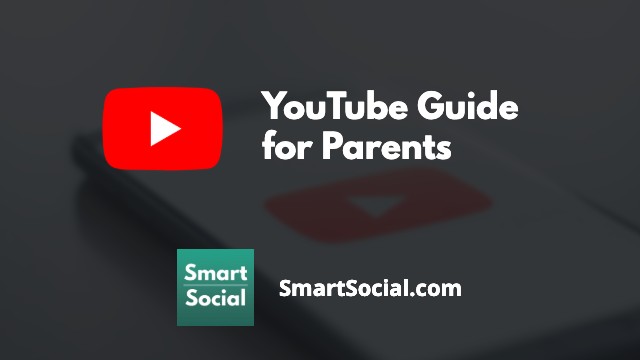5 Tips For Better Family Communication Around The Dinner Table
Green Zone App
(Click here to learn more)
Dangerous Social media challenge
(Click here to learn more)
Red Zone App
(Click here to learn more)
Gray Zone App
(Click here to learn more)

We caught up with Ted Zuhlsdorf, co-founder of High Low Glitter and asked him to share with us how to improve family communication around the dinner table.
Study after study confirms that students who frequently participate in family dinners are more likely to get better grades, are less likely to engage in risky behaviors, are less likely to be overweight, and are more likely to have better relationships with their parents and siblings. Unfortunately, fewer and fewer families report having family dinner together.
Therefore, when you do take the time to sit down together, make the most of it.
Studies show that children who participate in family dinner are more likely to get better grades
1. Don’t ask “How,” ask “What?”
Think about how often do you ask “How was your day?” only to get a one-word response: “fine,” “okay,” “good.” The format of the question directs the answer, and if a kid (or adult) can get away with one word, they often will. We found a way around this, by asking “what” questions. This format virtually guarantees that you will not get one-word answers, and instead will open a flow of conversation that is just waiting to be unleashed.
By asking 'How was your day?' you'll only get a one-word response. Ask 'what' questions instead.
We have been doing this around our table since our children, now in college, were in preschool. It works like this. Each person simply shares their high (the best part of the day), low (the worst part of the day), and glitter (a fun or unexpected moment that stands out). It might be just a sentence or two about a moment or event, or it could be a long drawn out explanation with a back story. You never know what you are going to get. And as a bonus, the practice of framing and sharing your lows and highs fosters self-reflection, gratitude, and compassion.
2. Ask, 'What was your High/Low/Glitter'?
Share with family your high-the best part of the day, low-the worst part, and glitter-an exciting moment.
High (the best part of the day):
- I really like my math teacher, he is funny. I had lunch with my best friend, who I’d not seen a month. The new recipe turned out way better than expected. I finished the project ahead of schedule and am really pleased with it.
Low (the worst part of the day):
- My computer got a virus and I had to do scans that took forever. Lunch was disgusting, some brown mush; I have no idea what it was. The dog made a total mess in the kitchen again. I missed an important call I'd been waiting for all day.
Glitter (a fun or unexpected moment):
- I found ten dollars in pair of pants that I hadn't worn since last fall. It’s like free money! I scored a goal at the scrimmage. Dessert tonight - OMG I love chocolate cake. I saw a baby hummingbird in the backyard today. It was adorable.
3. Tips when the dinner table isn’t an option
Just because you can’t have dinner together doesn’t mean you’ve lost your opportunity for communication.
- Just because you can’t have dinner together doesn’t mean you’ve lost your opportunity for sharing. There are many opportunities for pausing to share with each other:
- over breakfast, catching up on the previous day;
- in the car, going to and from;
- near bedtime;
- at the end of a weekend or trip, or school year, sharing a High Low Glitter “special edition”.
4. Last but not least: Cyber family dinner
Online technologies allow families stay in touch and share their ups, downs and special moments.
When our children left home for college, we all really missed sharing our day through High Low Glitter. So we created highlowglitter.com a micro-social networking website with phone apps so that we could share our ups and downs and special moments whenever and wherever we are.
Even though we are separated from our two children by two and seven time zones, respectively, we still share our daily high, lows, and glitters.
5. Want to get your students talking?
Start the conversation yourself; share your own high low glitter and get the conversation rolling. If your children see you making an effort to have a conversation with them and inputing your own thoughts, they might feel more inclined to share themselves. Get the entire family involved, not just the kids.
The practice of High Low Glitter has been instrumental in keeping our family close and connected. We hope that it can do the same for you and yours.
Learn more about our guest expert: Ted Zuhlsdorf, co-founder of High Low Glitter.

Ted Zuhlsdorf is married to the creator of High Low Glitter, stepfather to twin daughters who are college juniors, and a web developer. When he is not at his computer he can be found riding one of his bicycles.
Do you have family dinner conversations? Share your experiences with us in the comment box below.
Protect your family and enter for a chance to win cool prizes
Become a member or log in to learn more on this topic
Protect your family and enter for a chance to win cool prizes

., start learning from this page to earn points!*
Hello, I'm Josh, the founder of SmartSocial.com.
Don't leave this page until you fill out our feedback form that will appear after you learn from the resources...
Here are some of the latest resources at SmartSocial.com
Become a Very Informed Parent (VIP) to get our social media suggestions in your email every Tuesday & Thursday.



Hello, I'm Josh, the founder of SmartSocial.com. Protect your family by taking my 1 minute quiz
This quiz will help you understand how safe your family is


Schools & Districts: Partner with us to protect your community online
Our remote presentations (and website) teach over a million parents and students each year how to be safe so they can shine online. We teach students how their accounts can be used to create a portfolio of positive accomplishments that impress colleges and employers.


Join Our Smart Social Podcast
each week on iTunes
With over 500 episodes, Josh Ochs interviews psychologists, therapists, counselors, teachers, and parents while showing you how to navigate social media to someday shine online.
Listen on:



.jpg)

.jpg)

_.jpg)
.png)